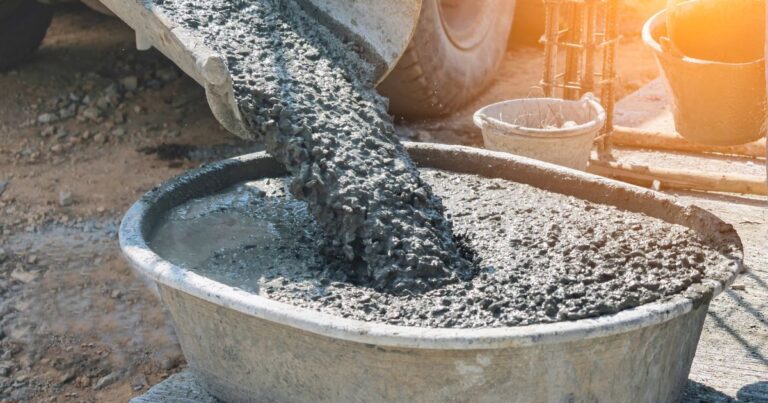In industrial operations, particularly those in the power generation and manufacturing sectors, efficient boiler operation is crucial for ensuring consistent energy production. Boiler feed pumps (BFPs) play a vital role in feeding water into boilers to generate steam. The boiler feed pump calculation of various parameters related to the boiler feed pump’s operation is critical to optimizing performance, ensuring energy efficiency, and preventing operational failures.
One of the best ways to simplify this complex task is by using a Boiler Feed Pump Calculation tool. This tool helps engineers, plant operators, and maintenance teams accurately calculate essential parameters like flow rate, pump head, power requirements, and even provides unit conversion support for ease of use. This article will delve into the importance of these calculations and explain how the Boiler Feed Pump Calculation works.
Boiler Feed Pump Calculator
The Role of Boiler Feed Pumps in Industrial Operations
Before diving into the functionality of the boiler feed pump calculation, it’s essential to understand the role of boiler feed pumps in industrial processes. These pumps are responsible for transferring water from a source (such as a tank or reservoir) into a steam boiler. The boiler then heats this water to produce steam for power generation or other industrial processes.
Key factors influencing the operation of a boiler feed pump include:
- Boiler Capacity (TPH) – This is the amount of steam the boiler can generate per hour.
- Operating Pressure (Bar) – This is the pressure at which the boiler operates. The pump must overcome this pressure to deliver water efficiently.
- Feedwater Temperature (°C) – The temperature of the feedwater can affect pump performance. Higher temperatures require different materials and pump settings.
- Elevation (m) – The height at which the water source is located relative to the boiler can influence the head pressure the pump needs to generate.
A boiler feed pump’s performance is directly linked to the efficiency of a boiler system. If the pump operates under or over its rated capacity, the system can suffer from energy inefficiency, mechanical wear, or even failure.
Introducing the Boiler Feed Pump Calculation Tool
The Boiler Feed Pump Calculation tool is a valuable resource that streamlines the process of calculating the key parameters involved in operating a boiler feed pump. It allows users to determine the required flow rate, pump head, power requirements, and NPSH (Net Positive Suction Head)—all critical metrics for selecting the right pump and ensuring optimal boiler performance.
Why Use the Boiler Feed Pump Calculation Tool?
- Time-Saving – Instead of manually calculating various pump parameters, this tool automatically generates results in seconds, saving valuable time for engineers and operators.
- Accuracy – The boiler feed pump calculation tool uses precise formulas to calculate parameters like pump head, flow rate, and power requirements. This reduces the chances of errors that could arise from manual calculations.
- Efficiency – By offering suggestions for pump types based on input data, the boiler feed pump calculation helps users select the most energy-efficient pump, leading to long-term cost savings.
- Unit Conversion – The boiler feed pump calculation tool also includes unit conversion capabilities. This feature helps users work with various units like bar to psi or TPH to cubic meters per hour, making it easier to compare values and ensure compatibility with different systems.
- Increased Productivity – By quickly providing accurate results, the boiler feed pump calculation enables plant operators to make faster decisions, contributing to smoother and more efficient operations.
- Practical Guidance – The tool’s recommendations for pump selection and its detailed results offer users practical insights into pump selection, ensuring the system operates under optimal conditions.
Key Features of the Boiler Feed Pump Calculation Tool
The Boiler Feed Pump Calculation tool is packed with powerful features that simplify the process of selecting the right pump and ensuring efficient operation. Here’s a breakdown of its main features:
1. Boiler Capacity Input
The calculator allows users to input the boiler capacity in tons per hour (TPH). This is the starting point for most boiler feed pump calculations. The tool uses this value to estimate the flow rate that the pump will need to provide to ensure the boiler is adequately fed with water.
2. Operating Pressure
Another critical input is the operating pressure of the system, usually measured in bars or psi. The boiler feed pump calculation uses this information to determine the pump head, which is the height the pump needs to raise the water to overcome pressure.
3. Feedwater Temperature
The temperature of the feedwater is another crucial factor. The boiler feed pump calculation accounts for feedwater temperature to optimize pump power consumption, ensuring the pump is properly sized for the given conditions.
4. Elevation Difference
Elevation can significantly affect pump performance, particularly in large plants or high-altitude areas. The boiler feed pump calculation tool takes into account the elevation difference between the water source and the boiler to determine the required head.
5. Unit Conversion
The tool includes a unit conversion feature, which enables users to convert values like pressure and flow rate between common units such as bar to psi, and TPH to cubic meters per hour. This makes it easier for users working with different unit systems to make necessary adjustments.
6. Pump Selection Recommendations
After calculating the required parameters, the boiler feed pump calculation tool provides recommendations for the most appropriate pump type based on the calculated data. This feature helps users choose the right pump to meet their system’s needs.
7. Clear Results Display
The boiler feed pump calculation presents results in a simple, easy-to-understand format. This includes values like flow rate, pump head, power requirements, and NPSH, along with suggestions for appropriate pumps.
8. Error Checking and Validation
The boiler feed pump calculation tool includes built-in checks to validate user inputs. If any input is missing or invalid, the tool displays an error message, ensuring that users provide accurate data before proceeding with calculations.
How to Use the Boiler Feed Pump Calculation Tool
Using the boiler feed pump calculation tool is simple and intuitive. Follow these steps to get accurate calculations and select the right pump:
- Enter Boiler Capacity – Input the boiler’s steam capacity (in TPH). This gives the boiler feed pump calculation a starting point for the required flow rate.
- Input Operating Pressure – Enter the operating pressure (in bars or psi) of the system. This is crucial for determining the pump head.
- Enter Feedwater Temperature – Provide the feedwater temperature in degrees Celsius (°C). The boiler feed pump calculation will use this to adjust the pump’s power requirements.
- Provide Elevation Difference – Input the elevation difference between the water source and the boiler in meters. This will influence the pump head.
- Click “Calculate” – Once all inputs are provided, click the “Calculate” button. The boiler feed pump calculation tool will process the information and generate the required calculations.
- Review Results – The results will display the required flow rate, pump head, power requirements, and NPSH. Based on these parameters, the tool will suggest an appropriate pump type.
- Use Unit Conversion – If you need to convert units (e.g., bar to psi, TPH to cubic meters per hour), simply enter the value, select the conversion type, and click “Convert”.
Practical Benefits for Industrial Operations
The Boiler Feed Pump Calculation tool offers significant advantages for industries that rely on boilers for steam generation. Here’s how it benefits various stakeholders:
For Engineers and Plant Operators:
- Optimized Pump Selection: Engineers can use the boiler feed pump calculation tool to quickly determine the appropriate pump size and type, improving system efficiency.
- Reduced Maintenance Costs: By selecting the correct pump, plant operators can reduce wear and tear, ultimately saving on repair and replacement costs.
- Enhanced System Efficiency: Accurate boiler feed pump calculations help ensure that the pump operates at its peak efficiency, reducing energy consumption and operational costs.
For Industrial Maintenance Teams:
- Accurate Diagnostics: The boiler feed pump calculation tool helps maintenance teams identify performance issues in pump systems more easily by providing precise calculations for comparison.
- Efficient Troubleshooting: If there are issues with the boiler feed system, maintenance teams can use the boiler feed pump calculation results to determine whether the pump is underperforming or if another system issue exists.
For System Designers:
- Streamlined Design Process: Designers can use the boiler feed pump calculation tool during the planning and design phase to ensure the proposed pump system is well-suited to the boiler requirements.
- Cost Savings: By optimizing pump size and performance, designers can help reduce both upfront capital costs and long-term operational expenses.
Conclusion
In conclusion, the Boiler Feed Pump Calculation tool is an essential tool for any industrial operation that utilizes boiler systems. Its ease of use, accuracy, and powerful features make it indispensable for engineers, plant operators, and maintenance teams. By simplifying complex calculations and providing real-time recommendations, this tool enables users to make informed decisions that lead to optimized pump performance, reduced energy costs, and enhanced system reliability.
For industries looking to maintain efficient, cost-effective operations, the Boiler Feed Pump Calculation tool is a game-changer. By integrating this tool into your workflow, you can ensure that your boiler feed system operates at peak performance while reducing the risk of costly errors and equipment failures.
Start using the Boiler Feed Pump Calculation tool today to take control of your system’s efficiency and performance!

Niraj Ghanghoriya is a tech-savvy content creator with a passion for building advanced online tools and writing in-depth, user-focused guides. With a strong focus on clarity, engagement, and SEO, he simplifies complex topics to help users make informed decisions.





Awesome https://is.gd/tpjNyL
Awesome https://lc.cx/xjXBQT